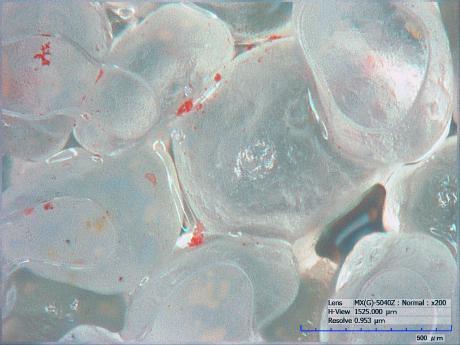 Study examines the environmental impacts of the flowback fluid from hydraulic fracturing. (Credit: Flickr @ pfly https://www.flickr.com/photos/pfly/ )
Study examines the environmental impacts of the flowback fluid from hydraulic fracturing. (Credit: Flickr @ pfly https://www.flickr.com/photos/pfly/ )Accidental spills and deliberate land application of hydrofracking fluids, which return to the surface during hydraulic fracturing, could cause the release of tiny particles in soils that often strongly bind heavy metals and pollutants, according to Cornell University scientists.
Previous research has shown that 10 to 40% of the water and chemical solution mixture injected at high pressure into deep rock strata surges back to the surface during well development. Scientists at the College of Agriculture and Life Sciences studying the environmental impacts of this “flowback fluid” found that the same properties that make it so effective at extracting natural gas from shale can also displace tiny particles that are naturally bound to soil, causing associated pollutants, such as heavy metals, to leach out.
SEE ALSO: Technology Cleans Oil and Gas Wastewater With Carbon Dioxide

A magnified image shows partially wet sand grains (gray) with colloids (red). (Credit: See citation at the end of this article)
They described the mechanisms of this release and transport in a paper published online June 6 in the American Chemical Society journal Environmental Science and Technology (see footnote).
The particles they studied are colloid—larger than the size of a molecule but smaller than what can be seen with the naked eye—which cling to sand and soil due to their electric charge.
In experiments by graduate student Wenjing Sang and members of the Soil and Water Group, glass columns were filled with sand and synthetic polystyrene colloids. The researchers then flushed the column with different fluids—deionized water as a control, and flowback fluid collected from a Marcellus Shale drilling site—at different rates of flow and measured the amount of colloids that were mobilized.
On a bright field microscope, the polystyrene colloids were visible as red spheres between light-gray sand grains, which made their movement easy to track. The researchers also collected and analyzed the water flowing out of the column to measure the colloid concentration leaching out.
They found that fewer than 5% of colloids were released when they flushed the columns with deionized water. That figure jumped to 32 to 36 percent when flushed with flowback hydrofracking fluid. Increasing the flow rate of the flowback fluid mobilized an additional 36 percent of colloids.
They believe this is because the chemical composition of the flowback fluid reduced the strength of the forces that allow colloids to remain bound to the sand, causing the colloids to actually be repelled from the sand.
“This is a first step into discovering the effects of flowback fluid on colloid transport in soils,” said postdoctoral associate Cathelijne Stoof, a co-author on the paper.
The authors hope to conduct further experiments using naturally occurring colloids in more complex field soil systems, as well as different formulations of flowback hydrofracking fluid collected from other drilling sites.
Stoof said awareness of the phenomenon and an understanding of the mechanisms behind it can help identify risks and inform mitigation strategies.
“Sustainable development of any resource requires facts about its potential impacts, so legislators can make informed decisions about whether and where it can and cannot be allowed, and to develop guidelines in case it goes wrong,” Stoof said. “In the case of spills, you want to know what happens when the fluid moves through the soil.”
Sang, W., Stoof, C., Zhang, W., Morales, V., Gao, B., Kay, R., Liu, L., Zhang, Y., & Steenhuis, T. (2014). Effect of Hydrofracking Fluid on Colloid Transport in the Unsaturated Zone Environmental Science & Technology DOI: 10.1021/es501441e
